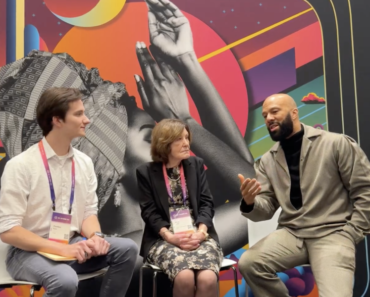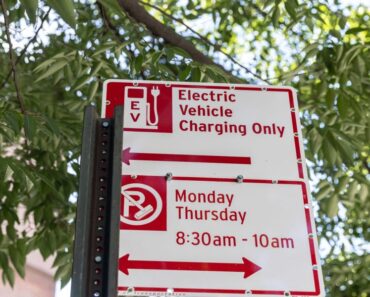This post was originally published on this site
https://fortune.com/img-assets/wp-content/uploads/2024/04/2024-Headshot-for-James-Manyika-1.jpg?w=2048
On Friday morning, Google announced a $75 million grant in an upskilling initiative called the AI Opportunity Fund. The fund—meted out through Google.org, the company’s philanthropic arm—aims to make AI training more accessible across the globe, namely in underserved communities and those working in nonprofits or small businesses.
In tandem, the ubiquitous tech giant announced it’s rolling out a new product-agnostic course on AI essentials, geared at covering foundational AI skills and best practices.
“AI offers significant opportunities to accelerate economic growth, particularly if people have access to the right resources and training,” James Manyika, Google’s senior vice president of Research, Technology & Society, wrote in a press release. “Google.org’s new AI Opportunity Fund and Google’s AI Essentials Course are important next steps in our commitment to ensure everyone, everywhere can access AI training.”
“No single employer or policymaker will be able to modernize workforce programs on their own,” Manyika went on. “We are committed to collaborating across industry, civil society and government to ensure the opportunities created by new technologies are available to everyone.”
AI skills are crucial for us all
The need for generative AI skills in day-to-day work is only growing more urgent. As Lisa Gevelber, founder of Grow with Google, told Fortune last year, the American workforce currently has a “giant mismatch” wherein “two-thirds of Americans—about 70 million workers—are basically locked out of all the jobs in our country.”
Gevelber launched Grow with Google, the skilling initiative, in 2017. It shares lessons and certifications for the most in-demand skills of the day—often tech-related, like cybersecurity and data analytics. Enrollment is open to all, regardless of education level, and over 11 million Americans have taken a Grow with Google course so far.
Younger workers see clearly how a wider suite of capabilities can make them competitive candidates—and that can be crucial for pulling ahead at their current jobs. “As a matter of fact,” Gevelber said. “Gen Zers rate the ability to get upskilled in your job as even more important than paid vacation.”
Skills-based hiring is all the rage, including at legacy tech firms and private-sector stalwarts. Upskilling programs like Google’s are set to expedite and democratize the wave, Manyika tells Fortune.
Indeed, in the AI Essentials course, which spans just under 10 hours, students will gain skills that can apply to jobs across industries—and earn a certificate to prove it. It will be available to a handful of companies and universities as soon as it rolls out. “We think AI will have such a profound impact on workers’ future, and a key part of that is going to be the skills workers will need,” Manyika told Fortune, adding that the idea underpinning the grant is to bring upskilling opportunities to as many people as possible.
The Opportunity Fund doles out grants to organizations, letting them offer free courses for their workers. The actual AI Essentials course is self-paced, and doesn’t center on any particular AI product—not even Google’s. The idea, Manyika said, is to imbue learners with the basic skills to be able to use any AI product existing today, or which might exist down the line. Some questions learners might seek to answer: How do I generate a prompt? What can these tools help me with, and what’s still beyond their abilities?
An array of research shows the least-skilled worker often benefits most from AI implementation, Manyika said. “So we want to make sure the workers who may have been precluded from AI advancements can benefit.”
But naturally, simple AI know-how is hardly an antidote to the pitfalls still plaguing the nascent tech. “We know that some of these tools have limitations, around things like factuality or AI hallucinations,” Manyika said. “Knowing what the tools are good for—and not good for—is a very important skill; there’s real danger in misapplication.”
Generative AI might be a historically effective way of bridging skills gaps, which, as experts have long maintained, is a critical reason so few non-tech workers are able to fetch high salaries. “A lot of the divide in access to opportunities comes from the fact that, unless you have specific expertise, training or qualifications, things are closed off to you,” Manyika said, echoing Gevelber’s comments. “We think the tech itself—by being usable by non-experts—already helps address the gap.”
Students and young learners in underserved communities have “striking” ideas, Manyika said; they just don’t yet know how to generate the software code to bring those ideas to life. “Imagine being able to describe ideas to one of those systems and have it draft the code for it.”
“AI might create a reinvigoration of the American middle class—an upleveling effect,” Manyika said. “Because it doesn’t just benefit the people who are experts at it. It can close the gap.”
“This tech comes with certain responsibilities that we try to be mindful of and take very seriously,” Manyika said. “That’s why, at the heart of the work we do, we ask: Will this be helpful or beneficial in any way? AI will only work if it actually benefits workers.”




